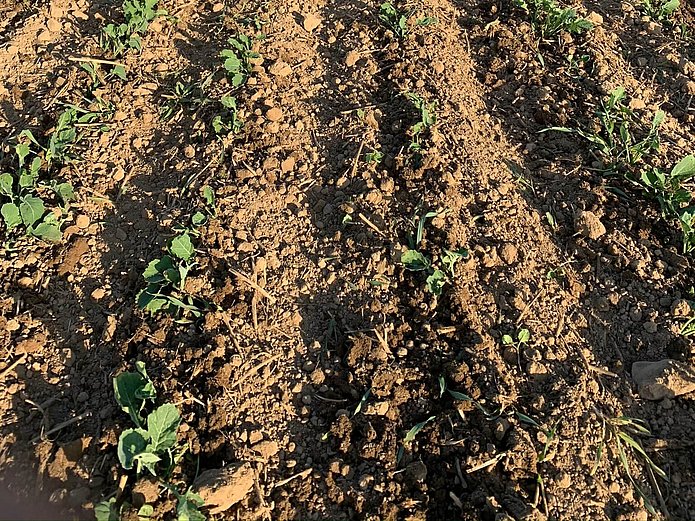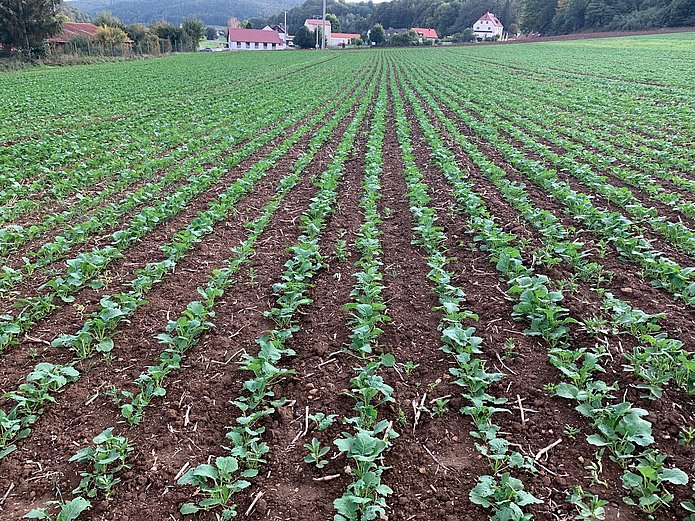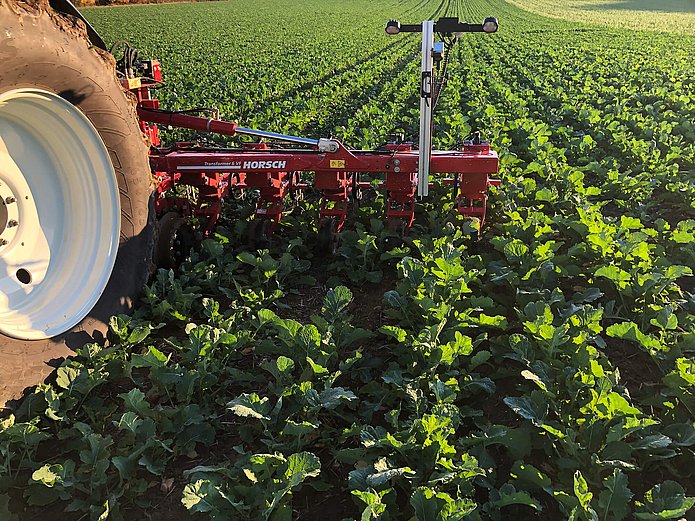Challenge to volunteer rape
Volunteer rape is a widespread problem. In two extensive agronomic tests HORSCH wanted to find out how this problem could be handled best. Among others they tested the potential of hoeing in this crop.
The first step of the test was sowing rape with a Maestro 12.50 CX with a row spacing of 50 cm instead of the usual 15 cm or 30 cm at two different sites. The first is near the HORSCH company headquarters at Sitzenhof. The fields were extremely infested with grass, the soils partly are very heavy. The second site is in the area of Regensburg, the clay ratio is almost similar, but there is more organic matter in the soil. On both sites old rape is a big issue because of long-time rape rotations.
The reasons for and the ideas with regard to these tests were varied. Everything started with the improved embedding of the seed by the seed unit of the Maestro especially on heavy soils. In this case the trash wheels of the machine are an additional advantage. They remove organic residues and clods from the rows. The trash wheels work excellently at an operational speed of 12 to 13 km/h and prepare a good seedbed.
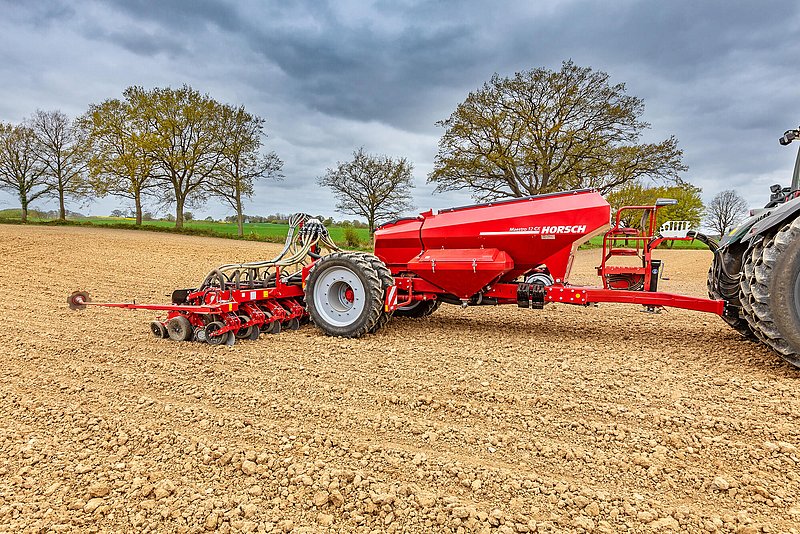
We opted for the row spacing of 50 cm because we wanted to hoe the rape. And as, in addition, we wanted to carry out tests with regard to band spraying to see if this makes sense in rape from an agronomic and an economic point of view. As far as yield is concerned observations and practical experiences of the past years showed that the larger row spacing does not have negative effects. Some HORSCH customers have already been relying on this method for quite some time. It has become apparent that rape can fill the space between the rows in an optimum way. In the ten- to twelve-leaf stage the rows are almost closed.
Due to the larger row width the sowing density was reduced to 25 to 30 grains per m2 to prevent the spacing between the plants in the row from getting too tight.
The basic problem clearly was the volunteer rape. It still emerges even after several years and acts as a competitor plant in hybrid rape. Hoeing allows for fighting at least all undesired plants between the rows. Thus, you can make full use of the yield potential of the new hybrid breedings in an optimum way. In total, with this method, about 80 % of the arable land will be hoed as the not cultivated band is about 10 cm wide.
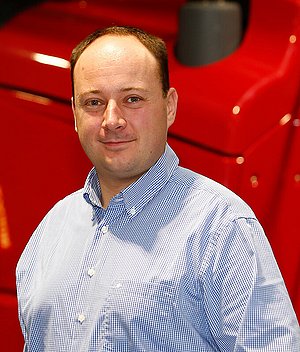
Info box: Michael Braun
Michael Braun has been working for HORSCH for twelve years and together with Kurt Glück heads the Sales Support department. In his private life he runs a part-time farm not far from Schwandorf. He also likes to experiment on his own fields. For he knows them inside out – especially with regard to soil structure and other empirical values. He, of course, sees his fields on a daily basis and due to the knowledge of the history he is also able to interpret special effects. He is generally interested in the further development of farming and in this case in the future of rape cultivation.
The challenge for our tests this year was that because of the heavy rainfall it was not possible to hoe early. Normally it would have been possible to hoe as of the four- to six-leaf stage – without providing a special protection for the crop. In fact, we were only able to carry out one pass in the ten-leaf stage. If the weather had been optimum, we actually had already planned the second hoeing pass in this stage.
The result of this year’s tests was excellent. On other fields, however, you would only catch about only 80 % of the old rape in one pass. In some regions, beside the old rape, the transmission of diseases because of a missing dressing of the volunteer rape are also a problem that might be reduced by hoeing early.
Also because of the EU Green Deal with the objective of a significant reduction of plant protection agents band spraying allows for achieving savings in the traditional row crops like maize, sugar beet and potatoes. In rape there is almost no reduction approach at the moment. We will carry out further tests to look into this in more detail.
The tests are accompanied by Michael Braun and Josef Stangl. Read the info boxes to learn what makes the two HORSCH experts tick and why they are personally interested in this method.

Info box: Josef Stangl
Josef Stangl has been working for HORSCH for nine years and his focus is on new cultivation concepts in arable farming. Before that he worked as a plant production adviser and today, he still advises some agricultural farms part-time. Since he started to work for HORSCH he has been contributing his broad knowledge in the sector of practical plant protection and his experiences about application and nozzle technology. He is motivated by his interest in agronomic cultivation strategies and overall concepts for farming to discover, understand and further develop new methods. In this respect, his focus is on the securing of yields under the most different regional or production-related conditions of arable farming.
He is driven by the fun and the attraction to try things out that lead to demonstrable improvements and to implement them with farmers. Josef Stangl also acts as a discussion partner and adviser for all questions from the arable farming sector for our own agricultural farms.
